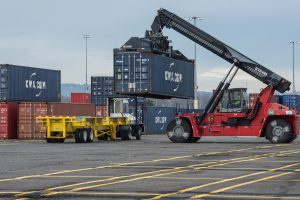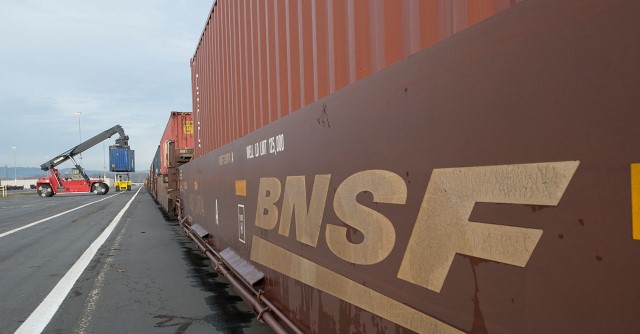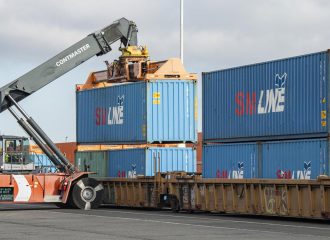The best model is multi-use. We spent the past several months studying what a sustainable business model for container shipping at Terminal 6 looks like. The conclusion: the most viable business model is a multi-use terminal that dedicates revenues from other terminal activities to support container service.
The study acknowledges that Portland’s geography as a river port, and marine industry consolidation, pose challenges to recovery of weekly transpacific container service.
 There’s more than one element to success. Having enough container volumes to sustain a weekly transpacific service will be key to success. We’re focused on giving shippers a variety of choices to move their cargo. Direct container service is only one option – others include a new BNSF rail shuttle to Seattle/Tacoma ports, barging and air cargo. Swire Shipping, a mixed cargo vessel with containers, begins calling Terminal 6 this month.
There’s more than one element to success. Having enough container volumes to sustain a weekly transpacific service will be key to success. We’re focused on giving shippers a variety of choices to move their cargo. Direct container service is only one option – others include a new BNSF rail shuttle to Seattle/Tacoma ports, barging and air cargo. Swire Shipping, a mixed cargo vessel with containers, begins calling Terminal 6 this month.
The study found other elements for success include maintaining competitive terminal rates, keeping labor productivity levels at or above West Coast standards, reducing costs, and securing container volume support from the shipping community.
Industry experts were integral to informing the process. As a part of the study, we convened an industry leader committee comprised of 23 members with diverse representation including exporters, importers, service providers, carriers, ports, labor (IBEW and ILWU), and legislators with strong shipper interests to provide industry knowledge and guidance. Shippers agree that T-6 is the region’s link to world markets and their continued support is needed to attract carriers.
For more detail, check out the study’s executive summary.





